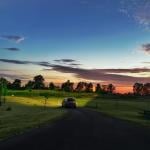New Chapel at West Point.
![George_Deshon[1]](https://wp-media.patheos.com/blogs/sites/224/2013/10/George_Deshon1-219x300.jpg)
Special to the New York Times.
WEST POINT, N.Y., June 10— A hundred priests, vested in their clerical robes, assisted Bishop John M. Farley of New York to dedicate the new Catholic cadet chapel here this morning. After the dedication ceremonies Bishop Farley confirmed Col. Otto L. Hein’s young son. Lieut. C.M. Smith was his sponsor. The oration by the Rev. George Deshon, head of the Paulist Society, reviewed the progress of Roman Catholicism at West Point.
The dedication services began at 10:30 o’clock. Preceded by the altar boys, one of whom carried a cross, the assembled priests, followed by Bishop Farley, left the vestry and moved in procession around the outside of the chapel. The Bishop sprinkled holy water on the ground and building. When a complete circuit of the chapel had been made the procession entered by the main doorway and headed up the centre aisle. Bishop Farley was the last to enter. After the side aisles had been blessed, the procession entered the vestry again. A minute later Bishop Farley ascended the altar and solemn high mass began. Father McCready, rector of the Holy Cross Church, New York, assisted him, while the Rev. Joseph O’Keefe of the Philadelphia cathedral, and Father McLaughlin, rector of the Church of the Transfiguration, New York, were the deacons. Father Hayes, Bishop Farley’s secretary, was master of ceremonies.
Among those present were: Secretary of War Root, Paymaster General Bates, Col. Albert C. Mills, Superintendent of the Military Academy, and Col. Otto L. Hein, Commandant of Cadets. The invited guests from New York included ex-Mayor William R. Grace, ex-Mayor Hugh L. Grant, ex-Postmaster General Thomas L. James, ex-Judge Joseph F. Daly, Judge James O’Gorman, W. Bourke Cockran, and Louis V. O’Donohue. Many prominent Catholics from Philadelphia were also present.
After the gospel had been read, Father Deshon, Superior General of the Paulists, began his sermon. He spoke of his own cadet days when Gen. Grant and himself were roommates. There were few professed Catholics at West Point in those days, he said. Only one officer crossed the river to Cold Spring, where a little Catholic church stood on what was almost a wilderness. That solitary officer represented West Point’s Catholic population. He congratulated the cadets on having such a beautiful building, and exhorted the graduating members to always remember their religious duty.
The music was rendered by a double quartet from Holy Cross Church, New York, accompanied by twenty-five stringed pieces of the Military Academy orchestra. When mass ended, Bishop Farley addressed the congregation. He thanked Secretary of War Root for the War Department’s donation of ground for the chapel. To Col. Mills, Col. Hein, and Col. Bellinger, he expressed sincere thanks for the many acts of kindness and courtesies they had extended to Father O’Keefe from the time the site was selected until the last stone had been laid.
The Catholic chapel is built of granite in Gothic style. A bell tower nearly 80 feet in height gives it an imposing appearance. Twelve stained glass windows light the interior. The pews are of polished oak, arranged in two columns of sixteen rows each, and have a seating capacity of nearly 500. A handsome marble altar was placed in the chapel last week. The site is commanding and convenient. It is at the end of Professors’ Row, near an old Revolutionary outpost.
After the services the priests, with Bishop Farley and many invited guests, went to Lady Cliff, formerly Cranston’s Hotel, where a banquet had been prepared. The Sisters of St. Francis now occupy the hotel. To-night Father Deshon gave a lecture to the members of the Cadet Young Men’s Christian Association in their hall in the barracks.











